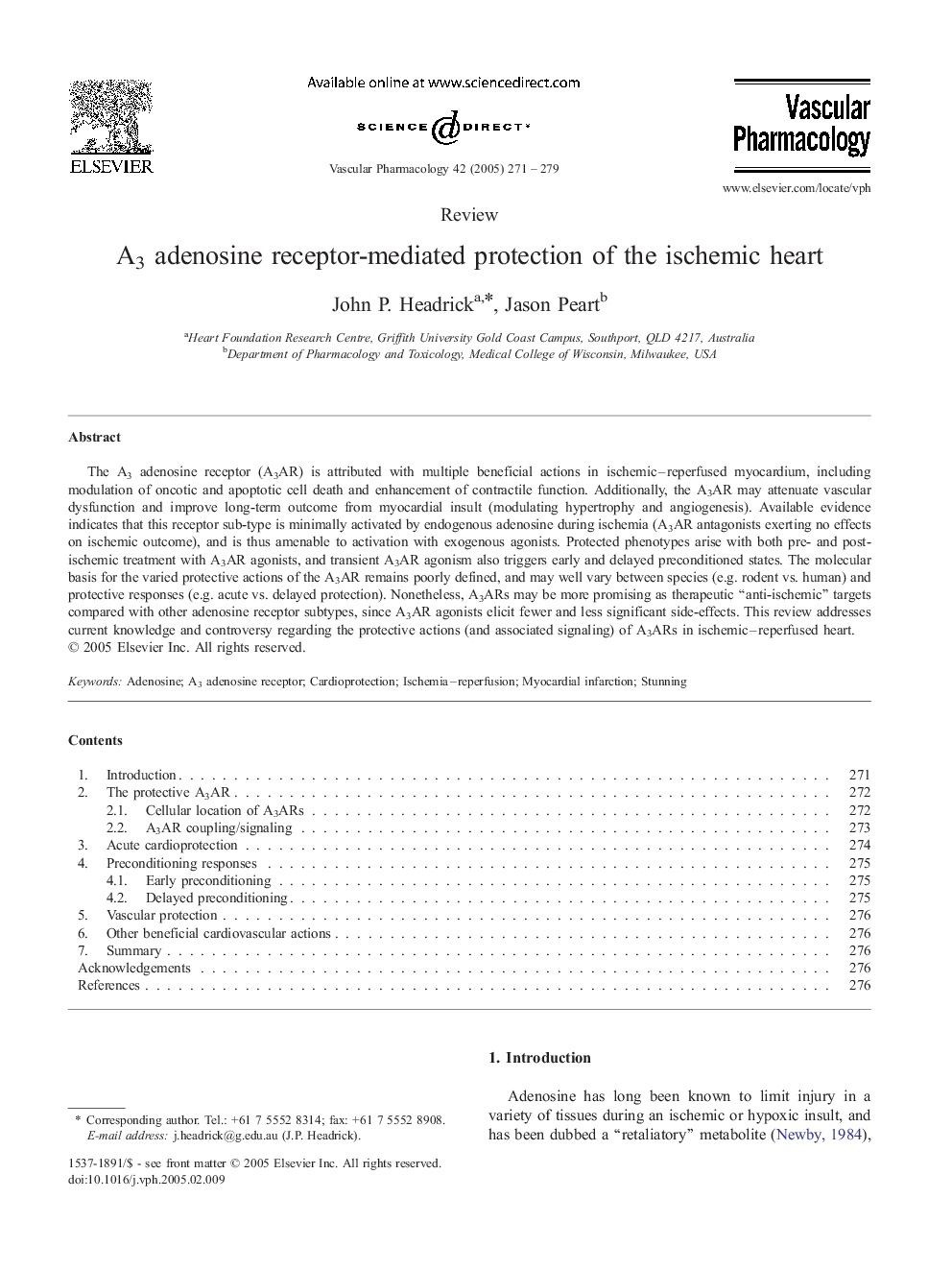| Article ID | Journal | Published Year | Pages | File Type |
|---|---|---|---|---|
| 9020835 | Vascular Pharmacology | 2005 | 9 Pages |
Abstract
The A3 adenosine receptor (A3AR) is attributed with multiple beneficial actions in ischemic-reperfused myocardium, including modulation of oncotic and apoptotic cell death and enhancement of contractile function. Additionally, the A3AR may attenuate vascular dysfunction and improve long-term outcome from myocardial insult (modulating hypertrophy and angiogenesis). Available evidence indicates that this receptor sub-type is minimally activated by endogenous adenosine during ischemia (A3AR antagonists exerting no effects on ischemic outcome), and is thus amenable to activation with exogenous agonists. Protected phenotypes arise with both pre- and post-ischemic treatment with A3AR agonists, and transient A3AR agonism also triggers early and delayed preconditioned states. The molecular basis for the varied protective actions of the A3AR remains poorly defined, and may well vary between species (e.g. rodent vs. human) and protective responses (e.g. acute vs. delayed protection). Nonetheless, A3ARs may be more promising as therapeutic “anti-ischemic” targets compared with other adenosine receptor subtypes, since A3AR agonists elicit fewer and less significant side-effects. This review addresses current knowledge and controversy regarding the protective actions (and associated signaling) of A3ARs in ischemic-reperfused heart.
Keywords
Related Topics
Health Sciences
Medicine and Dentistry
Cardiology and Cardiovascular Medicine
Authors
John P. Headrick, Jason Peart,
